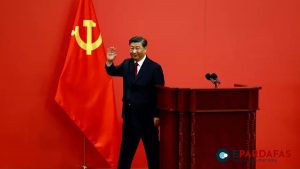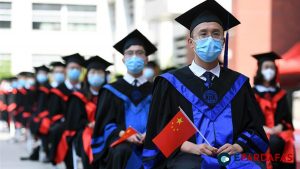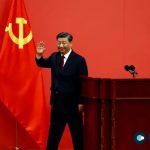
China After Zero-COVID
BEIJING – China’s ability to execute major policies is always impressive, and the 180-degree turn on the zero-COVID strategy that it had been enforcing almost religiously for nearly three years is no exception. Virtually overnight, the government began tearing down once-ubiquitous COVID-19 testing centers. State media started emphasizing that the symptoms of the Omicron variant are very mild. Residents of many cities were suddenly released from lockdown: people in Guangzhou, for example, can now go from home quarantine to a karaoke bar within two hours.
The post-COVID era has arrived in China. What now?
As drastic quarantine rules become a thing of the past, Chinese people will be able to resume something like their pre-pandemic lives. They will return to their offices, shop in department stores, dine in restaurants, and visit parks and temples – all without taking daily COVID tests or fearing a mandatory sojourn in a quarantine center.
But China cannot simply wave goodbye to the pandemic. The vaccination rate remains low, especially among the elderly, with only 40% of people over 80 having had three doses (including a booster). And China’s hospital capacity – 3.4 intensive-care beds per 100,000 people – remains well below developed-country levels. The United Kingdom has three times more, the United States has 7.5 times more, and Germany has ten times more.
This implies that a huge uptick in infections and deaths should be expected, and that the health-care system will come under growing pressure. While this is clearly a serious challenge, China must confront it in order to re-integrate into the post-COVID world. Better to lance a boil now than to let it fester.
Lancing it will nonetheless be painful, especially given many Chinese people’s deep-rooted reservations about Western vaccines and medication, and it will amount to a difficult political test for the government and the ruling Communist Party of China (CPC). The advantage offered by the current situation is that the government can claim that it is honoring the people’s will. Indeed, the protests that erupted in Chinese cities in recent weeks may have given the government just the reason it needed – or even sought – to scrap a policy whose success the government had touted too well (domestically, at least) for too long.
In early 2020, China’s aggressive lockdowns effectively brought COVID-19 under control, buying time for the rest of the world to implement similarly firm policies and stem the spread of the virus. Unfortunately, the world did not seize the opportunity. So, in 2020 and 2021, countries suffered from wave after wave of variant-fueled outbreaks. As the death toll mounted elsewhere, China, thanks to the zero-COVID strategy, lived without the virus.
Then Omicron came along. The variant’s unique characteristics – much more transmissible, but causing generally milder symptoms – should have led China to adjust its approach. But would the Chinese public accept it? An exit from zero-COVID would be difficult to justify to all the people who, encouraged by a government they trusted, had spent years believing that COVID can be deadly, and that the West’s decision to pursue herd immunity showed callous disregard for people’s lives and humanity. It would also be difficult to explain to all those CPC members who had worked tirelessly to defend the Party and its policies.
Yes, Omicron was different. But in a country that places so much importance on saving face, the government needed more than that. The anti-lockdown protests – animated by deep and accumulated frustrations – provided it. Cases will rise and the health-care system will be strained, but the people’s voices have been heard.
This does not mean that China’s government will welcome more protests. On the contrary, it will act firmly to tighten up. The authorities have already banned many social-media platforms, fearing that they could facilitate an uprising like those that swept the Arab world a decade ago. The fact that people still managed to organize protests in many cities indicates that even stricter controls on social media will be in place.
China’s 20th CPC Congress in October stressed that “development is the Party’s top priority in governing and rejuvenating China.” But the economy is stalling. China’s GDP grew only 3% in the first three quarters of this year, the lowest rate (with the exception of 2020, when the pandemic began) since Deng Xiaoping launched “reform and opening up” more than 40 years ago.
The drivers of Chinese growth have also changed. In 2019, private consumption contributed the most to Chinese growth, and exports shrank. Now, private consumption growth is on a negative trajectory, not least because of the hit that lockdowns dealt to both incomes and consumer confidence.
When the government can order an entire city to shut down at any moment, manufacturers cannot properly operate or plan. Profits from so-called above-scale industrial enterprises dropped by 3% in the January-October period, compared to last year. In Beijing, they plummeted by 43.6%. China’s economy is sliding off a cliff.
China’s leaders are well aware that a stagnant economy will shake people’s confidence in the government and undermine the CPC’s legitimacy. So, given the choice between restoring economic growth and maintaining the now-unpopular zero-COVID policy, growth wins. The good news is that, given its high implementation efficiency, China’s economy may be able to recover surprisingly fast.
Qian Liu is an economist based in China.
Copyright: Project Syndicate, 2022.
www.project-syndicate.org














Comments